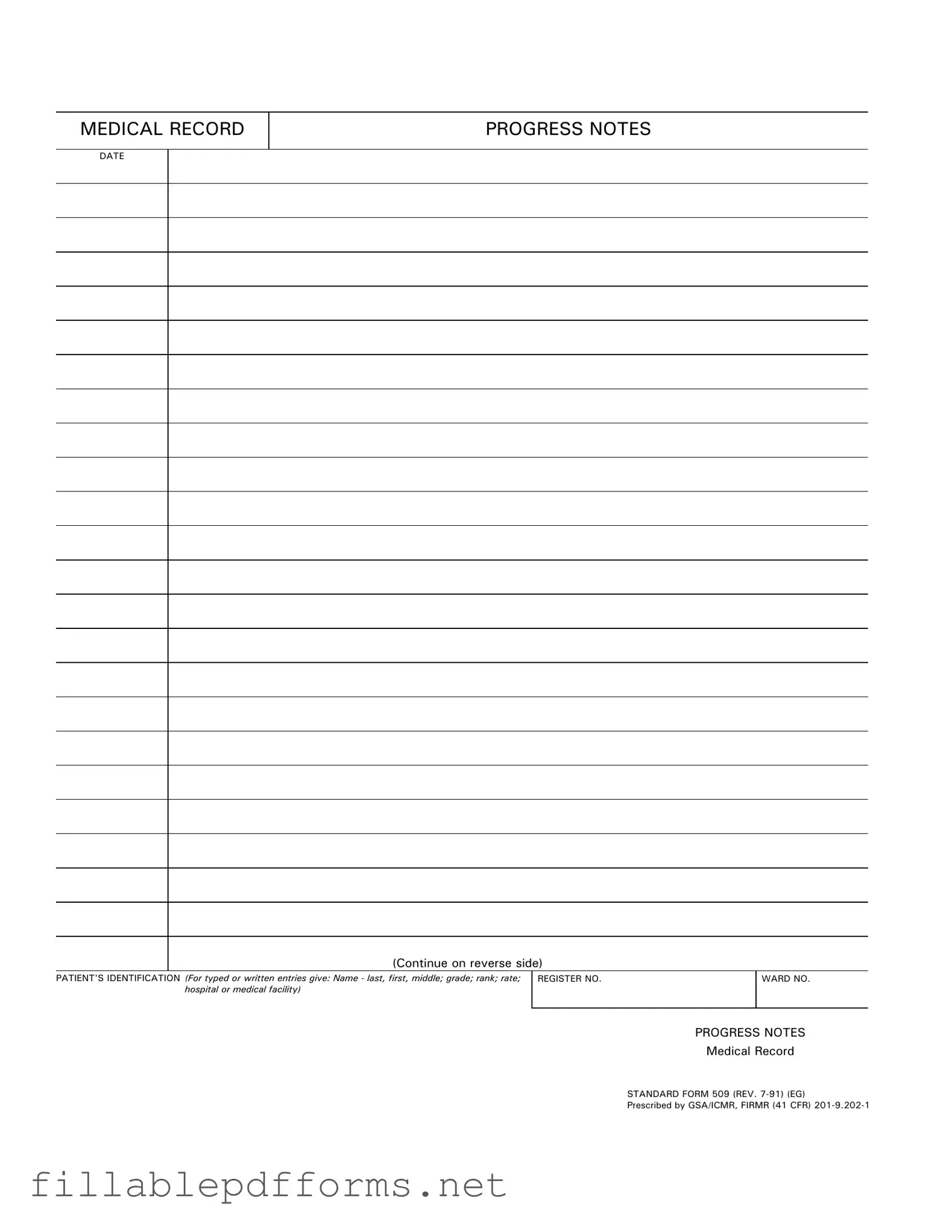The Progress Notes form is an essential component of patient care documentation, ensuring that healthcare providers maintain a clear and accurate record of patient interactions and treatment plans. This standardized form, identified as Standard Form 509, includes critical information such as the patient's identification details, which encompass their name, grade, rank, rate, and the specific hospital or medical facility where they are receiving care. Each entry is dated, allowing for a chronological understanding of the patient's medical history and ongoing treatment. By utilizing this form, healthcare professionals can provide a comprehensive overview of a patient's progress, facilitating communication among team members and enhancing the continuity of care. The design of the Progress Notes form emphasizes clarity and organization, making it easier for providers to track significant developments in a patient's condition. Ultimately, thorough documentation through this form is not just a regulatory requirement; it is a vital practice that supports patient safety and effective healthcare delivery.
